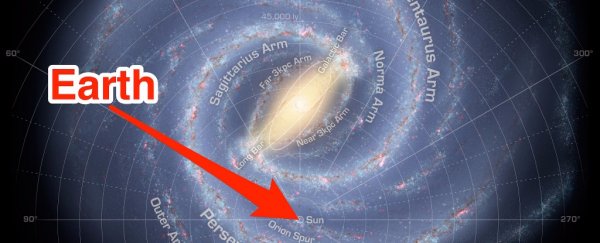A stunning new photo of the Milky Way came about because of a flea-market purchase, a late night on a Chilean mountain range, and a dash of inspiration.
The photo, taken by astronomer Juan Carlos Muñoz-Mateos, shows our home galaxy projected backward and upside-down through a crystal ball.
Muñoz-Mateos focused his camera's lens on the orb of glass to bring out crisp details of the Milky Way, resulting in an image that seems to lock the galaxy inside a marble.
"I love photographing the Milky Way, but it's a tricky subject in the sense that there are many pictures of it out there, and it can be hard to come up with a novel way to portray it," Muñoz-Mateos, an astronomer who studies galaxy formation and evolution, told Business Insider in an email.
 (Juan Carlos Muñoz-Mateos)
(Juan Carlos Muñoz-Mateos)
How to capture the Milky Way in a crystal ball
Muñoz-Mateos works for the European Southern Observatory – a group of world-class telescopes sprinkled all over Earth. He works at and most often observes the universe with the Paranal Observatory in Chile.
The idea for his remarkable new shot, which has already been shared thousands of times on Twitter, came about in a flea market in the Santiago neighbourhood of Barrio Lastarria.
"I stumbled upon this one stand selling all sorts of used artifacts, among which there were a bunch of crystal balls, and I couldn't help buying one," Muñoz-Mateos wrote in an Instagram post about the photo.
"For just a few bucks, this may very well have become my new favourite 'lens'!"
 (Juan Carlos Muñoz-Mateos)
(Juan Carlos Muñoz-Mateos)
A few days later, the astronomer began a late-night observing run at Paranal Observatory, a telescope is in the Atacama Desert of northern Chile. The site is high, dry, and far away from light pollution – making it an exceedingly clear place to take images of the night sky.
Muñoz-Mateos stepped outside after his observation shift with his camera, a tripod, and the crystal ball.
"I've always been inspired by macro photographs that use water droplets to magnify a subject in the background," he said.
He placed the crystal ball on a handrail post, then aimed his Canon 6D camera at the orb.
He chose a 24mm (wide-angle) lens so that he could capture the Milky Way in the background and also through the ball.
The plane of focus is razor-thin, though, so the background stars and other celestial objects appear as fuzzy points of light (an effect that photography buffs call bokeh).
A few tries later, and after 30 seconds of exposure time, Muñoz-Mateos ended up with his image. It shows the thick cluster of stars, gas, and dust inside the Milky Way; in effect, we're looking toward the center our disc-shaped spiral galaxy.
Muñoz-Mateos said the photo required a bit of noise reduction to come out clear, but that he was "rather excited" when he first saw the photograph on his camera screen.
"If you have the chance to buy one of these cheap crystal balls, I totally recommend it. They're really fun to use, and they can add a very original spin to your photography," he said. "I already have a few crazy ideas in mind for future images. Stay tuned!"
You can see Muñoz-Mateos' ongoing photography work on Instagram, where he shows off pictures of setting moons, astronomical lasers, solar green flashes, and the beautiful Chilean landscape.
This article was originally published by Business Insider.
More from Business Insider:
